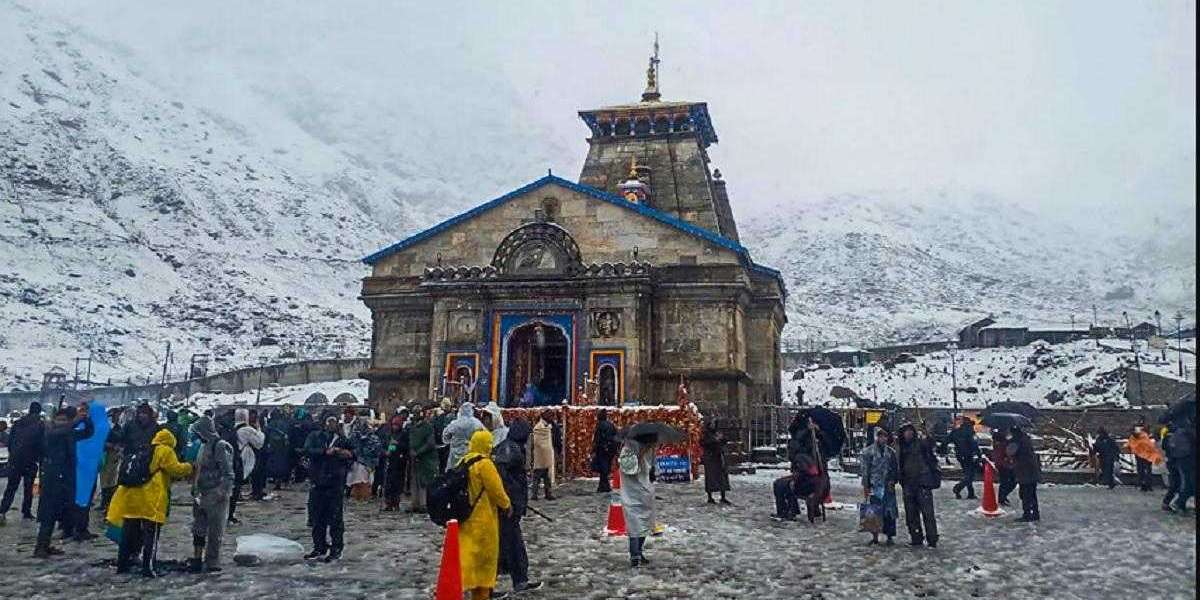Introduction
The Kedarnath Yatra is a sacred pilgrimage in the Garhwal Himalayas of Uttarakhand, India, that takes you to the awe-inspiring Kedarnath Temple. Nestled at an elevation of 3,583 meters (11,755 feet) above sea level, this ancient temple is one of the 12 Jyotirlingas, holding immense religious significance. Pilgrims undertake this journey to seek blessings from Lord Shiva and experience the serenity of the mountains. This guide is designed to help you embark on this spiritual adventure.
Kedarnath Temple: The Abode of Lord Shiva
The Kedarnath Temple stands as a remarkable architectural marvel amidst the stunning Himalayan landscape. It's a sacred site revered by millions of devotees who undertake the arduous journey to pay homage to Lord Shiva. The temple's stone walls and intricate carvings add to its mystique. The chilling weather at such high altitudes, the snow-covered temple complex, and the tranquility all combine to create a unique spiritual aura.
Panch Kedar: A Sacred Circuit
The Kedarnath Yatra is part of the sacred Panch Kedar Yatra, a religious circuit that includes five temples dedicated to Lord Shiva. Apart from Kedarnath, these temples are Madhyamaheshwar, Tungnath, Rudranath, and Kalpeshwar. Each temple has its own significance and is surrounded by breathtaking natural beauty. The Panch Kedar Yatra allows pilgrims to explore different facets of spirituality and nature.
Chorabari Lake: Gandhi Sarovar
The Kedarnath Yatra route includes a visit to Chorabari Lake, often referred to as Gandhi Sarovar. This glacial lake is encircled by snow-capped peaks and lush meadows. It's a place where pilgrims take a break to soak in the serenity of the surroundings. The crystal-clear waters of the lake reflect the grandeur of the mountains, creating a picture-perfect scene.
Gaurikund: The Base Camp
Gaurikund, a small town at the commencement of the Kedarnath Yatra, is named after Goddess Parvati. It serves as the base camp for the pilgrimage and is known for its hot water springs. Taking a dip in these natural hot springs is a ritual that many pilgrims observe to purify themselves both physically and spiritually before embarking on their sacred journey.
Traditional Yatra Route
The traditional Kedarnath Yatra route begins at Gaurikund and covers a distance of 16 kilometers. Pilgrims trek through dense forests, alongside pristine rivers, and amidst meadows dotted with vibrant alpine flowers. The challenging journey is not only about reaching the temple; it's also about immersing oneself in the natural beauty and experiencing the diversity of the Himalayan landscape.
Linchauli Route: A Quieter Path
For those seeking a more contemplative pilgrimage, the Linchauli route offers a quieter and less-traveled path. This route, which is 18 kilometers long, meanders through serene forests and lush meadows. It's a road less taken, ideal for those who want to soak in the tranquility of the Himalayas without the hustle and bustle of larger groups of pilgrims.
Vasuki Tal: A Serene Lake
Vasuki Tal is a high-altitude lake along the Kedarnath Yatra route. This pristine lake is enveloped by snow-capped peaks and lush meadows, offering pilgrims an opportunity to immerse themselves in the natural beauty of the region. It's a spot to rest and reflect, with the serene lake acting as a mirror to the breathtaking Himalayan scenery.
Bhairon Temple: Guardianship
The Bhairon Temple, situated just a kilometer from the Kedarnath Temple, is dedicated to Lord Bhairon, who is believed to be the guardian and protector of the Kedarnath Temple during the harsh winter months when it remains closed. Pilgrims visit this temple to offer their respects before entering the main temple.
Ideal Time to Visit
The best time for the Kedarnath Yatra is during May-June and September-October. In May-June, the landscape is adorned with lush greenery and clear skies. The pleasant weather allows for a comfortable pilgrimage experience. In September-October, the vibrant autumn colors of the Himalayas create a striking backdrop, enhancing the spiritual journey.
Charan Paduka: Footprints of Devotion
Charan Paduka is a significant rock enshrined with what are believed to be the footprints of Lord Shiva. Pilgrims make a stop here to pay their respects, offering their devotion to the divine. This place holds deep spiritual value and enhances the overall pilgrimage experience.
Witness the 'Aarti'
The Kedarnath Temple hosts 'aarti' ceremonies at different times of the day, with the evening 'aarti' being particularly enchanting. The melodious chants, the rhythmic ringing of bells, and the breathtaking backdrop of the Himalayas create a spiritually uplifting ambiance. Participating in the 'aarti' allows pilgrims to connect with the divine presence and soak in the spiritual energy of the sacred place.
Conclusion
The Kedarnath Yatra is not just a physical journey; it's a spiritual quest that allows pilgrims to connect with both nature and divinity. With careful planning, physical fitness, and mental preparedness, this yatra promises to be a transformative experience. Whether you're a devout pilgrim or a nature enthusiast, the Kedarnath Yatra offers a unique opportunity to explore the sublime beauty of the Himalayas and strengthen your spiritual connection.



